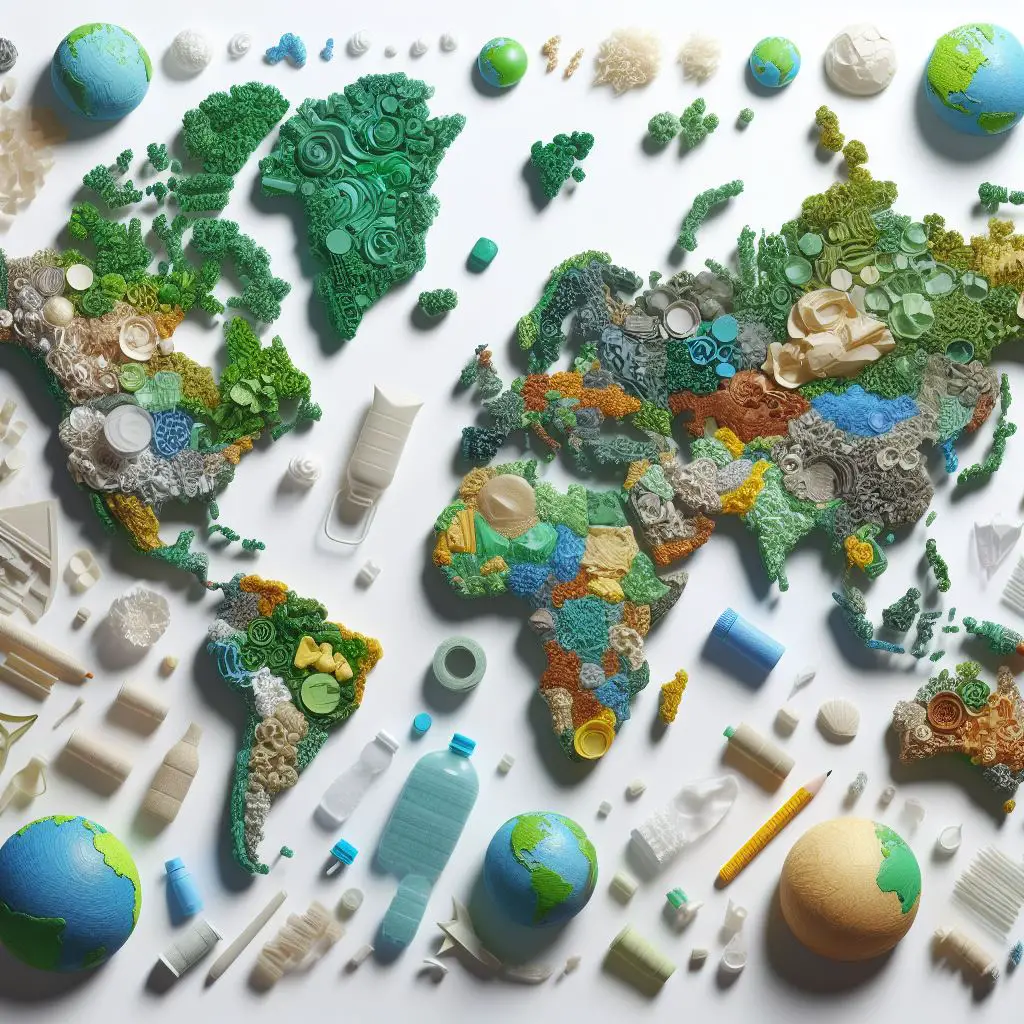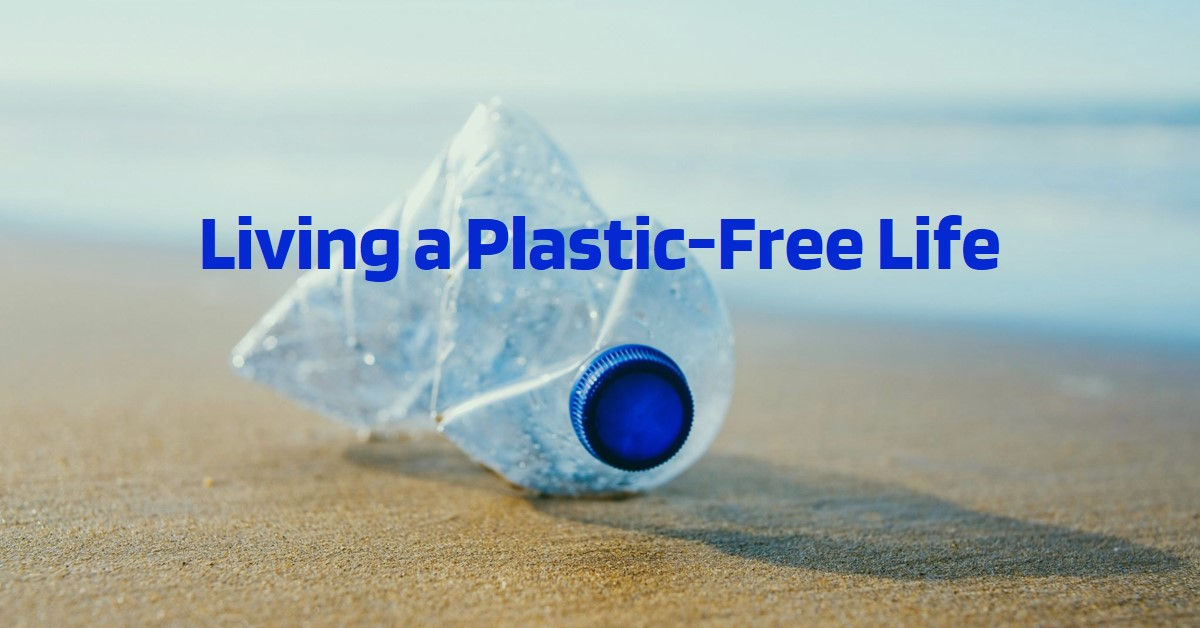Plastic pollution has become one of the most pressing environmental issues we face today. With over 300 million tons of new plastic being produced every year, only a small percentage is recycled. The rest ends up either in landfills or worse, directly in our oceans and natural habitats. Adopting a plastic-free lifestyle is one of the most impactful things you can do for the environment.
This comprehensive guide covers all aspects of going plastic-free. Follow these tips to dramatically reduce your plastic waste at home, work, while shopping traveling, and beyond. Together we can stop plastic at the source for measurable positive change.
Understanding Plastic Waste and Its Environmental Impact

Before detailing how to live plastic-free, let’s ground ourselves on why we should reduce plastic in the first place.
Plastic never fully biodegrades and too often ends up in our ecosystems. Marine life from sea turtles to arctic birds now regularly show plastic bits in their digestive systems, often causing a slow death from starvation or toxicity. Over 100 million marine animals die due to plastic entanglement and ingestion every year.
Many plastics also leach harmful chemicals like BPA and phthalates. These can bioaccumulate up the food chain into our bodies and have been linked to diseases from cancer to infertility.
Additionally, the entire lifecycle of plastic from extraction of oil to manufacturing to waste management contributes enormous amounts of greenhouse gases fueling climate change.
The Ellen MacArthur Foundation reports plastic is responsible for 3.4% of global carbon emissions. And production is set to double over the next 20 years as more regions industrialize and the population grows.
The good news is, that you as an individual can make a measurable impact through changes in daily habits and consumer choices. Here is how to realistically adopt a plastic-free lifestyle.
Eliminating Plastic Waste at Home
Our households generate a surprising amount of plastic waste regularly. Here are some effective ways to go plastic-free starting at home.
Kitchen and Dining
- Use reusable bags for produce, bulk bins, deli items, and baked goods instead of single-use plastic. Many grocery stores now incentivize bring-your-own-bag options.
- Ditch the disposables like plastic cling wrap, zipper bags, straws, and paper plates/cups. Opt for reusable containers, food wraps, straws, and dishware instead.
- Skip bottled beverages. Enjoy the water, coffee, tea, etc from reusable bottles, travel mugs, and glasses instead. SodaStream is great for carbonating your water.
- Shop local farms, butcher shops, and bakeries offering plastic-free bulk options and your containers for carrying items home.
- Compost food scraps rather than sending them out in single-use plastic bags. Many areas now offer municipal compost programs.
Bathing and Grooming
- Use solid shampoo & conditioner bars instead of traditional bottles. Ethique, HiBar, and J.R. Liggett’s all make great options.
- Switch to plastic-free razor handles compatible with stainless steel or compostable blades. Leaf Shave and Superzero are quality brands.
- Replace toothbrushes with models made of bamboo, wood, or other compostable materials. Options exist for both adults and kids.
- Use bar soap instead of body wash in plastic tubes or bottles. J.R. Watkins specializes in palm oil-free, plastic-free soaps.
Cleaning and Laundry
- Ditch the single-use pads, scrubs, and bottles. Brands like Blueland sell tablet-based cleaners just needing water in reusable containers.
- Use laundry strips that dissolve in the wash instead of messy liquid detergents packaged in plastic. Tru Earth is one reputable company offering eco-strips.
- Replace dryer sheets with wool laundry balls. These are reusable for up to 1,000 loads and help soften fabrics.
Miscellaneous Household Items
- Swap light switches/plates, showerheads, and other fixtures with plastic-free alternatives made of wood, glass, ceramic, etc. Etsy has many options.
- Use beeswax wraps in place of Saran Wrap and zipper bags for covering bowls and food storage. Abeego is a quality brand.
- Ditch the plastic trash bags for reusable stainless bags and food compost pails. Brands like Simplehuman make durable, stylish options.
- Use cloth paper towels instead of wasteful single-use paper towels. Make your own or brands like Magpie offer high-quality cloths.
| Category | Traditional Plastic Items | Plastic-Free Swaps |
|---|---|---|
| Kitchen/Dining | Cling wrap, zipper bags, bottled drinks, disposable cups/plates/utensils | Reusable produce bags, food wraps, glassware, reusable dishware |
| Bathing | Shampoo/conditioner bottles, disposable razors | Shampoo bars, razor handles with stainless blades |
| Cleaning | Single-use pads and scrubbers, detergent bottles | Tablet cleaners, wool dryer balls, laundry strips |
| Miscellaneous | Plastic trash bags, paper towels, light switch plates | Reusable stainless steel trash bags, cloth towels, ceramic switch plates |
Avoiding Plastic When Shopping
It takes vigilance to avoid plastic when out shopping, but a few key strategies make it very manageable:
Grocery Shopping
- Take reusable shopping bags and product bags discussed earlier
- Buy from bulk bins and plastic-free sections like butcher counters
- Select paper, cardboard or glass over plastic bottles and packaging
- Avoid produce stickers by visiting local farms or peel stickers off
- Bring your own containers for bulk items, baked goods, deli foods
Clothing and Housewares
- Check clothing tags and choose natural fabrics over synthetic fibers like polyester
- Look for items not packaged in plastic clamshell cases, plastic wrap, or zip ties
- Prioritize natural materials like cotton, leather, wood, ceramic, glass, bamboo, etc.
- Visit consignment and thrift stores to reuse existing items rather than buying newly manufactured
Toys and Gifts
- Check labels to avoid plastic components, seek toys made from natural materials
- Shop at consignment stores, handmade markets, and on Buy Nothing groups on Facebook
- Make edible or experience gifts rather than material items likely packaged in plastic
- Get creative repurposing used items as new gifts!
| Category | Problematic Plastics | Better Alternatives |
|---|---|---|
| Grocery items | Bottles, bags, packaging, produce stickers | Bulk bins, butcher paper, glass containers, no stickers |
| Clothing/Housewares | Synthetic fibers, plastic wrap, packaging | Natural materials, no plastic packaging |
| Toys/Gifts | Plastic components, packaging | Natural materials, consignment items, experiential gifts |
Traveling and Commuting Plastic-Free
Maintaining a plastic-free lifestyle while out and about does require planning. But you can travel and commute responsibly with the following tips:
Air Travel
- Take reusable bags through security to avoid plastic bins
- Bring your own food in reusable containers to avoid airport plastic
- Say no to plastic cups, bottles, utensils offered inflight
- Use solid toiletries in reusable travel cases instead of mini plastics
Road Trips
- Pack food and drinks in reusable containers for the car ride
- Research BBB
- Refuse disposable utensils, bags, etc from roadside vendors
- Carry a reusable spork, straw, and food wrap with you
- Take along a reusable shopping tote for any shopping stops
Public Transportation
- Bring reusable water bottles and mugs for your beverages
- Pack food in containers you can reuse throughout your commute
- Say no to single-use plastic if offered by vendors
Miscellaneous Tips
- Use reusable wraps, bags, bottles for takeout, leftovers, produce and other items when dining out
- Avoid street vendors serving food in plastic containers, cups, plates, etc.
- Politely encourage airlines, venues and vendors to offer plastic-free alternatives!
Eliminating the Need for Period Products
Women use tens of thousands of disposable tampons and pads over their lifetimes. But practical solutions exist for managing your period without contributing so much plastic waste:
- Try reusable cloth pads that snap into underwear and wash easily without staining. Brands like LunaPads, HannahPads, and GladRags make quality versions.
- Use a menstrual cup like those from Saalt, Lunette, or DivaCup to collect rather than absorb menstrual fluid. These medical-grade silicone cups last for years.
- Wear absorbent period underwear specifically designed for heavier flows while skipping single-use products. Thinx and Knix both offer leak-resistant underwear.
- Try natural sea sponges that work similarly to tampons except they are plastic-free and biodegradeable.
Over time, these alternatives save money compared to continually buying disposable period products. And they are discreet, comfortable solutions for managing periods plastic-free.
Offsetting Unavoidable Plastic Usage
Despite our best efforts, avoiding plastic 100% of the time remains an extreme challenge with current societal systems and norms. When you must resort to some plastic usage, here are two impactful things you can do to help offset:
1. Recycle Properly
It takes concerted effort for items to truly get recycled rather than landfilled. So take these steps:
- Clean food residue thoroughly off containers before recycling
- Check local guidelines on what types of plastic are accepted and sort properly
- Drop off at designated recycling centres if pickup isn’t available in your area
- For items not accepted curbside, research specialty recyclers near you or mail-back programs through companies like Terracycle
2. Support Environmental Initiatives
Look for opportunities to donate or volunteer your time towards broader systemic change:
- Support non-profits conducting beach cleanups like The Ocean Cleanup
- Get involved with organizations advocating for plastic bans and producer responsibility laws
- Use your consumer dollars to reward companies innovating around plastic-free products and packaging alternatives
While individual actions matter greatly, we ultimately need legal frameworks and business incentives to move away from single-use plastics on a global scale.
Conclusion
Adopting a plastic-free lifestyle requires rethinking many convenient but wasteful habits around single-use plastics. It also means becoming a more conscious consumer and perhaps spending a bit more for durable, responsibly packaged items.
However, the profound environmental payoff makes it well worth the effort for individuals willing to lead the change. Hopefully, this guide outlined actionable areas to dramatically reduce plastic waste in your everyday activities at home and beyond.
With some planning and willingness to adapt, living an eco-friendly, plastic-free life is attainable. And by inspiring those around you, the ripple effects can drive meaningful progress against the plastic pollution crisis unfolding around us.
